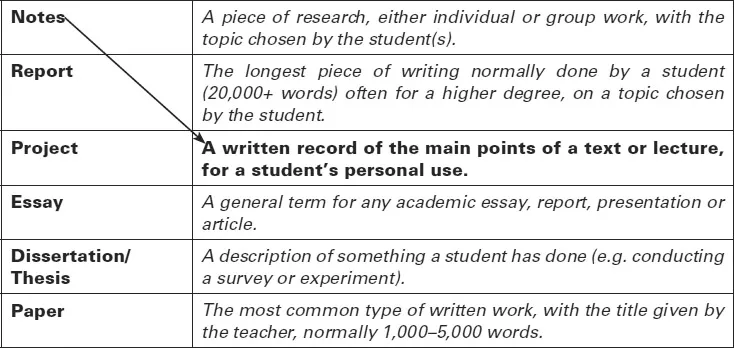
Academic Writing
A Handbook for International Students
Stephen Bailey
- 314 pages
- English
- ePUB (mobile friendly)
- Available on iOS & Android
Academic Writing
A Handbook for International Students
Stephen Bailey
About This Book
Now in its fifth edition, Academic Writing helps international students succeed in writing essays and reports for their English-language academic courses. Thoroughly revised and updated, it is designed to let teachers and students easily find the topics they need, both in the classroom and for self-study.
The book consists of five parts:
-
- The Writing Process
-
- Elements of Writing
-
- Language Issues
-
- Vocabulary for Writing
-
- Writing Models
The first part explains and practises every stage of essay writing, from choosing the best sources, reading and note-making, through to referencing and proofreading. The four remaining parts, organised alphabetically, can be taught in conjunction with the first part or used on a remedial basis. A progress check at the end of each part allows students to assess their learning. All units are fully cross-referenced, and a complete set of answers to the practice exercises is included.
New topics in this edition include Writing in Groups, Written British and American English, and Writing Letters and Emails. In addition, the new interactive website has a full set of teaching notes as well as more challenging exercises, revision material and links to other sources. Additional features of the book include:
-
- Models provided for writing tasks such as case studies and essays
-
- Use of authentic academic texts from a wide range of disciplines
-
- Designed for self-study as well as classroom use
-
- Useful at both undergraduate and postgraduate level
-
- Glossary to explain technical terms, plus index
Written to deal with the specific language issues faced by international students, this practical, user-friendly book is an invaluable guide to academic writing in English.
Frequently asked questions
Information
PART 1
The Writing Process
UNIT 1.1
Basics of Writing
- The names of different writing tasks
- The format of long and short writing tasks
- The structure of sentences and paragraphs
1 The purpose of academic writing
- to report on a piece of research the writer has conducted
- to answer a question the writer has been given or chosen
- to discuss a subject of common interest and give the writer’s view
- to synthesise research done by others on a topic

2 Features of academic writing

- Impersonal style – generally avoids using ‘I’ or ‘we’
3 Common types of academic writing


4 The format of short and long writing tasks
- Introduction
- Main body
- Conclusion
- Introduction
- Main body
- Literature review
- Case study
- Discussion
- Conclusion
- References
- Appendices

- Abstract
- List of contents
- List of tables
- Introduction
- Main body
- Literature review
- Case study
- Findings
- Discussion
- Conclusion
- Acknowledgements
- Notes
- References
- Appendices
- Foreword
- Preface
- Bibliography/Further reading

- a) A short summary which explains the paper’s purpose and main findings.
- b) A list of all the sources the writer has mentioned in the text.
- c) A section, after the conclusion, where additional information is included.
- d) A short section where people who have helped the writer are thanked.
- e) Part of the main body in which the views of other writers on the topic are discussed.
- f) A section where one particular example is described in detail.
- g) A preliminary part of a book usually written by someone other than the author.
ACADEMIC JOURNALS

5 The components of academic writing

- a) A Fishy Story
- b) Misleading health claims regarding omega-3 fatty acids
- c) Introduction
- d) There has been considerable discussion recently about the benefits of omega-3 fatty acids in the diet.
- e) It is claimed that these reduce the risk of cardiovascular disease and may even combat obesity. Consequently food producers have added omega-3s to products ranging from margarine to soft drinks in an attempt to make their products appear healthier and hence increase sales.
- f) However, consumers may be unaware that there are two types of omega-3, The best (long-chain fatty acids) are derived from fish, but others (short-chain fatty acids) come from cheaper sources such as soya. This latter group have not been shown to produce the health benefits linked to the long-chain variety. According to Tamura et al. (2009), positive results may only be obtained either by eating oily fish three times a week, or by taking daily supplements containing 500mg of eicosapentaenoic acid (EPA) or docosahexaenoic acid (DHA). (Source: Health Concerns, March 2016, p. 17)
6 Some other common text components
- a) Reference to sources using citation: According to Tamura et al. (2009)
- b) The use of abbreviations for convenience: docosahexaenoic acid (DHA)
- c) Italics: used to show words from other languages or add emphasis: Medical research companies know ex ante that these citizens cannot afford medicines.(= Latin fo...